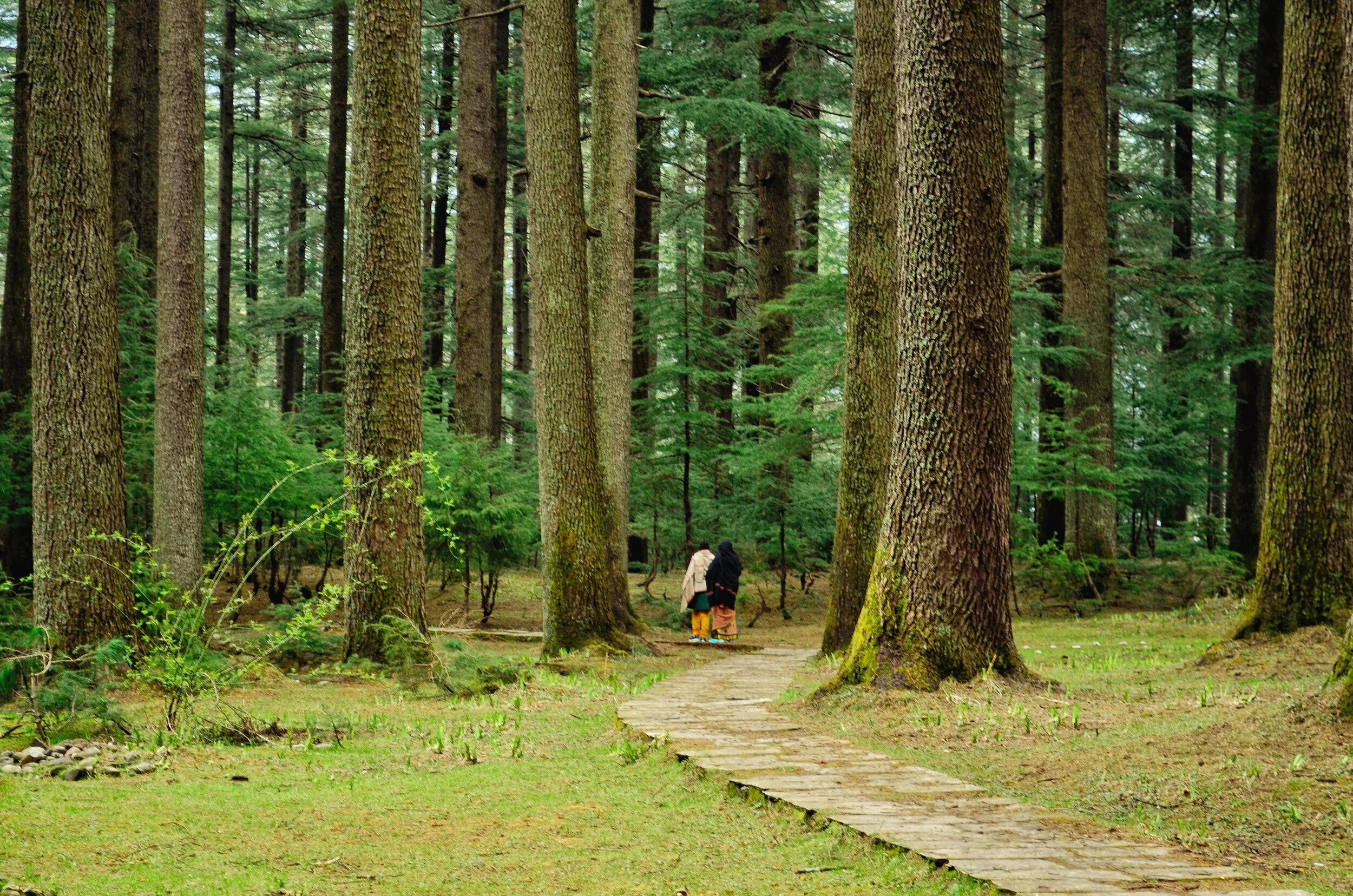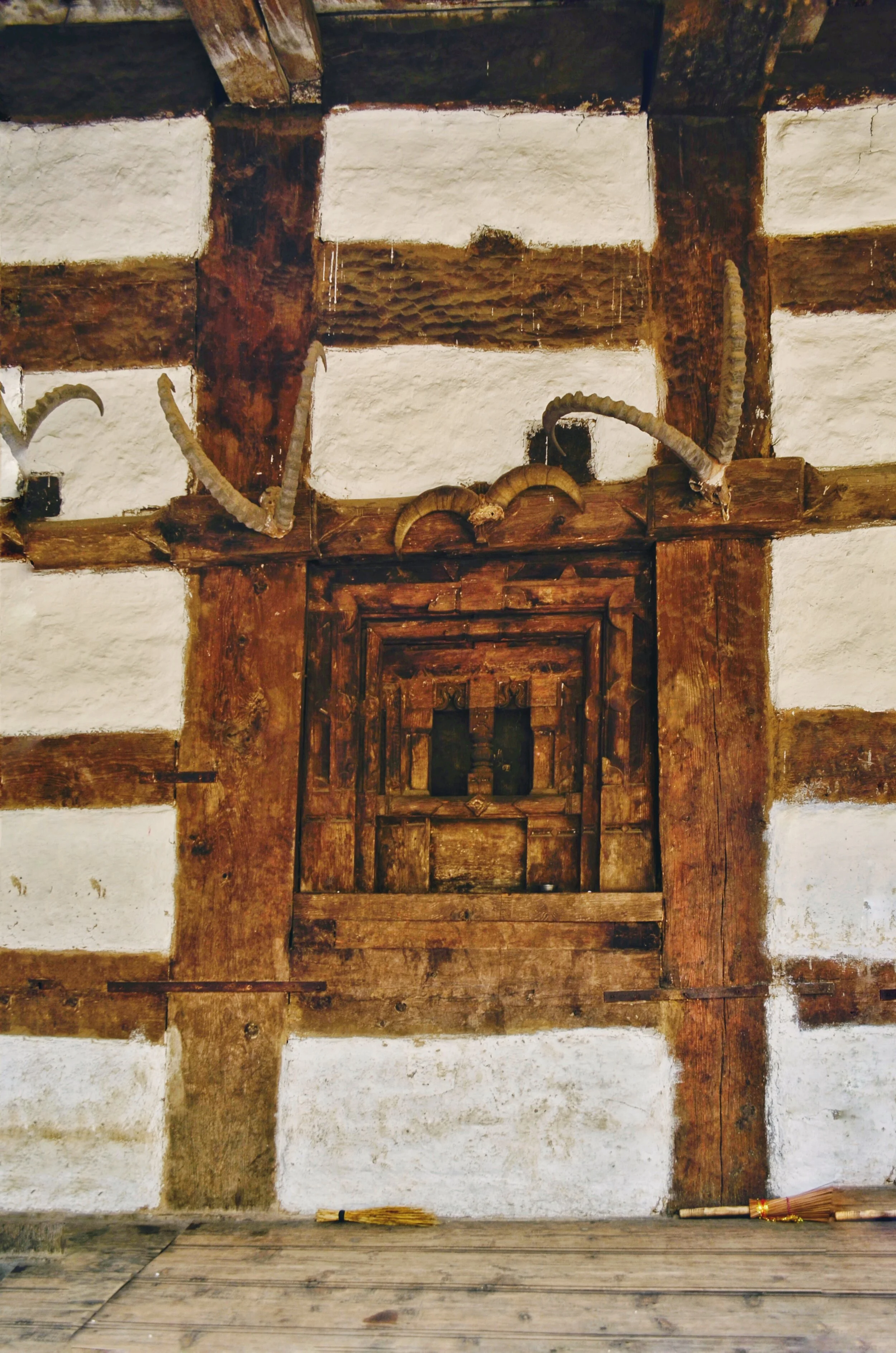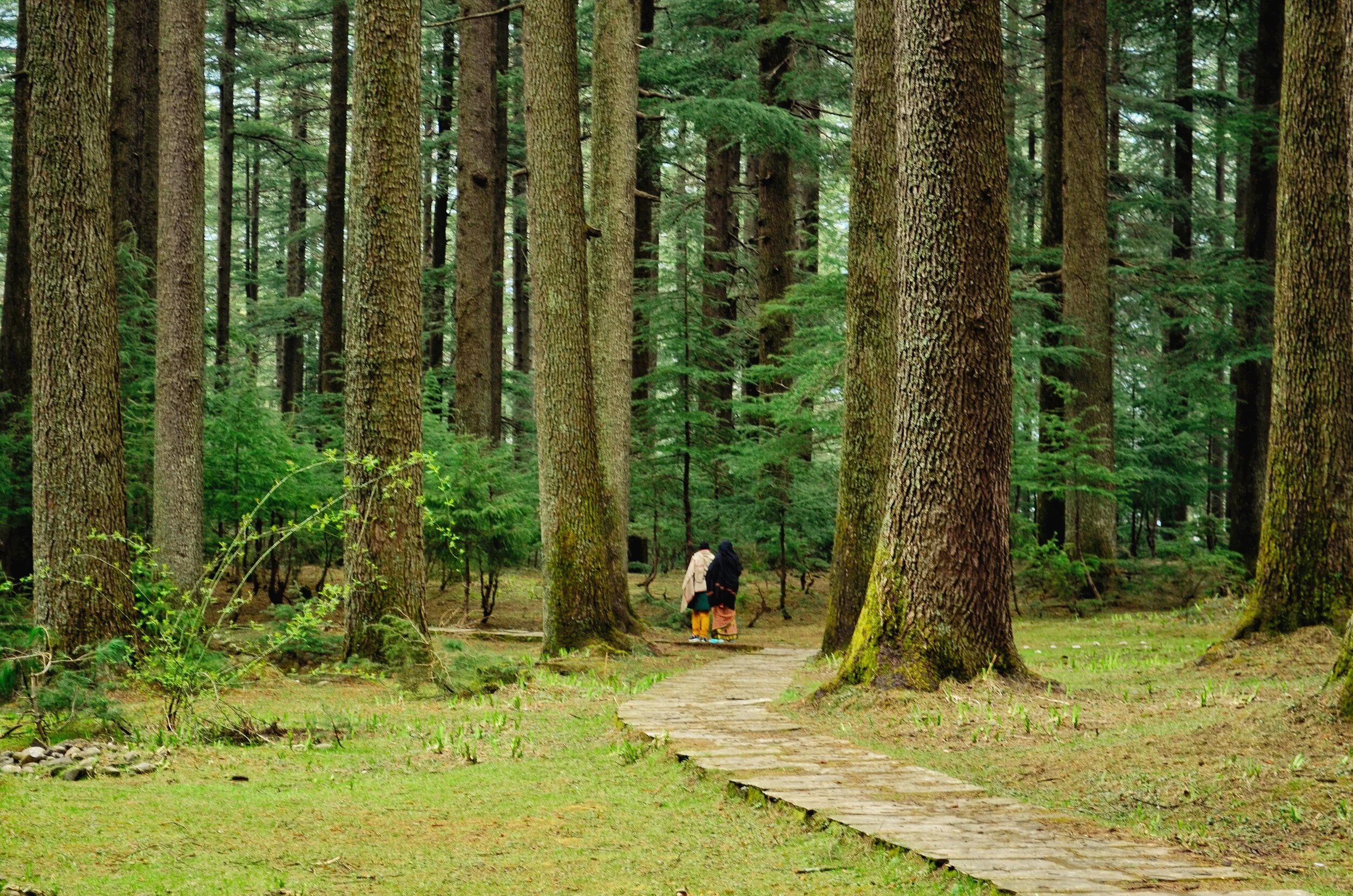A Goddess who hailed from a Rakshasa family
The story of Hidimba Devi Temple
Cuddled by tall and dense Deodars, the temple of Hidimba was resonating a soothing tranquil in the atmosphere. Himachal Pradesh's second tourist hotspot, Manali has been a personal favourite for the visitors here. Over the years, this little hilly town has managed to maintain its introvert demeanour. With the river Beas flowing across, it has a pleasant resemblance to Pahalgam in Kashmir. There is a selection of places worth seeing in Manali, and one of them is Hidimba temple. Every traveller who visits this town or passes through makes sure to visit this shrine before heading to the next destination.
On my first day of exploration, I too started it with offering my prayers to Hidimba Devi. Climbing more than a dozen steps that lead to the temple, a three-floored wooden hut-shaped structure stood relaxed at a few steps' distances. The air around it was so meditative around the shrine that the idea of staying here forever was alluring. At first glance, it might look more like a house than a place of worship. But I guess, that is what made it so warm and welcoming. There was a small door with bars to enter, but today it was closed. I glanced through the barred door. It was nearly dark inside with no artificial light to illuminate, but only the natural light entering was from the door. As my sight adjusted to the setting, I could make out a golden idol inside. The goddess was decorated beautifully with a few Vastras and a lot of flowers. After offering my obeisance to the goddess, I went on to explore around a little.
Animal horns decorated on the side of one of the walls at Hidimba Temple.
Walking up to the temple's placard, I started reading about the place's history. Maharaja Bahadur Singh ordered to build this sanctum in A.D 1553. Dedicated to the wife of Bhima, Hidimba originally hailed from a Rakshasa family. She swore to marry the person who was brave and courageous would defeat her brother Hidimb. As per the epic lore, Mahabharata, Bhima succeeded in killing her brother, and they were both married. The famous Ghatotkach from Mahabharata was the son of Bhima and Hidimba.
The shrine has a three-tiered roof constructed of narrow wooden planks. The lower three panels give the outer structure a canopied look. A large metal umbrella is surmounted at the top forming the fourth roof. A narrow verandah encloses the three sides raised to a height of 12 feet above the ground. Intricate and rich carvings adorn the facade and windows of this temple. I walked back to the quadruple wooden door. On its frame carvings of various deities like Shiva and Parvati on Nandi, Vishnu and Lakshmi on Garuda, Mahishasurmardini, Ganesha, and goddess Durga are shown on the doorframe. To complement these carvings, decorative pieces like knots, scrolls, animal figures, pot and foliage are also carved here. On the beam above the lintel, nine heavenly bodies(Navgraha) are present. On the top, motifs of Buddhist characters shows the temples' religious integrity. Just then, a brightly dressed procession of around 20 people walked across the steps towards the rare of the temple. The groom and his newly-wedded wife, sitting in the doli, had come to take blessings from the Hidimba Devi. During the Navaratri, they worship Goddess Hidimba as their deity instead of Goddess Durga.
One of the pathways leading from the Hidimba Temple into the forest.
I next moved to the exterior of the shrine. Paved pathways lead into the forests with bright green railings on both sides. One led to a small park a certain distance above the temple and the rest must be for easy access to several sectors of the town. I took one of them randomly. The forest of deodar stood tall and farther than my eyes could see. At a distance, vendors gathered to sell their produce to the visitors. Some families were bargaining with the vendors, couples clicking photos dressed in the traditional Himachali outfit, and some were posing with furry rabbits for a picture. I turned around and headed back to the temple. The business here was so different compared to the city. There was no loud advertisement or persistent nagging. Everything was working out smoothly. It was astonishing how the peace was so respectfully maintained here.
As I walked back to the steps, I glanced one more time at the barred door. The story of Hidimba has always fascinated me. Being born in a Rakshasa family, her brave deeds and her pure heart gave her the place of a God. This inspiring story signifies how it is not important where you hail from, but your actions make you the person you want to be. With that thought in mind, I picked up my pair of motivation from the temple and headed towards conquering my day's adventure.














